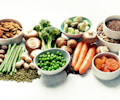The fundraising initiative announced today is a potential breakthrough in forest protection
Even though it covers a quarter of Brazil, the Cerrado savannah is less well-known than its northern neighbour, the Amazon rainforest. Yet the Cerrado is one of our planet’s most important ecosystems and home to 5% of the world’s biodiversity. It is also one of the most important Brazilian regions for water production – responsible for 40% of Brazil’s freshwater that is essential for agriculture. Crucially, the Cerrado is also the next major frontier for reducing deforestation risk in the food supply chain.
The Cerrado biome is under severe threat from land destruction as a result of the expanding production of beef and soy (as the key ingredient in animal feed) in the area. The savannah has already lost 50% of its original area due to agricultural expansion.
Funding for Soy Farmers in the Cerrado
To help safeguard this vital ecosystem, a network 60 Brazilian civil society organisations released the Cerrado Manifesto, a call for “immediate action in defense of the Cerrado by companies that purchase soy and meat from within the biome, as well as by investors active in these sectors.” In response, a coalition of over 70 companies and 50 investors did just that: signing the Statement of Support for the Cerrado Manifesto, a commitment to working with Brazilian stakeholders to halt deforestation in the region.
The Funding for Soy Farmers in the Cerrado initiative, a groundbreaking new fundrasing campaign announced today, is the culmination of this effort. It aims to support Brazilian-led efforts to expand soy only on existing agricultural land while protecting the Cerrado’s remaining forests and other important native vegetation.
Leeway for legal deforestation
In 2012, Brazil implemented amendments to the Forest Code, regulation that aims to protect native forests while supporting economic development. Under the Brazilian Forest Code, farmers in the Cerrado are legally required to conserve 20-35% of their forests and native vegetation, meaning a large proportion of the conversion of native Cerrado vegetation for agricultural use is legal. Consequently, forest loss is continuing: the Cerrado biome in Brazil is currently the world’s largest area of land conversion. As regulation alone is not enough to protect the Cerrado, financial incentives are needed to preserve the region’s biodiversity.
The new Funding for Soy Farmers in the Cerrado initiative aims to meet that need. It involves a central fund, made up of contributions from soy buyers, to support Brazilian stakeholder-led efforts to design a mechanism that delivers these outcomes in collaboration with the private sector.
Initial forecasts and modelling indicate that approximately $250 million in funding would be needed over a five-year period to achieve these goals. So it is highly encouraging that the likes of Tesco, Grieg Seafood and animal nutrition business Nutreco have already announced contributions to this mechanism at its launch.
Research shows there is over 20 million hectares of existing agricultural land (the size of the UK) suitable for soy expansion in the Cerrado. Expanding into these areas rather than newly converting native vegetation presents a more realistic and sustainable pathway for development. Today’s initiative unlocks a well-needed avenue for agricultural expansion that is also compatible with protecting globally important landscapes.
The Cerrado: an ecosystem under threat
Opening pathways for sustainable production in this area is crucial because of the Cerrado’s role in climate change mitigation, as a repository for biodiversity and as the source of many of Brazil’s freshwater systems. Every year, forest clearing in this biome is responsible for an estimated 250 million metric tons of carbon dioxide emissions, equivalent to the annual emissions of 53 million cars. If destruction continues at current rates, about one-third of the remaining Cerrado’s vegetation could be cleared by 2050, leading to the extinction of up to 480 plant species by 2050. The ecosystem is also a critical production region for the agricultural commodities used in our products, meaning its destruction could disrupt agricultural production and lead to widespread disruption in global supply chains.
The funding initiative is timely. Earlier this year, Brazil’s National Institute for Space Research (INPE) released data showing that deforestation had increased by 88% in June 2019 compared with the same period last year. Against this backdrop, the future of vital agreements like the Amazon Soy Moratorium which limits soy-driven deforestation in the Cerrado’s neighbouring Amazon, are also being questioned. A recent open letter urging the Brazilian government to keep such policies in place was signed by 86 organisations including companies such as Tesco and Asda and investors managing a combined $3.2 trillion of assets.
Both the Funding for Soy Farmers in the Cerrado Initiative and the campaign to protect the Amazon Soy Moratorium underscore the positive results that can come from corporate and investor leadership on forest protection. It also shows the importance of shareholders making clear to companies that they see deforestation as an investment risk that needs to be managed.
A material issue for investors
Investors can actively support these initiatives by engaging with the firms in their portfolio on deforestation risks. Last year’s Coller FAIRR Index found that none of the 50 meat and dairy companies assessed have a comprehensive policy to address or mitigate deforestation in all regions in which they source soy and/or cattle. That is something that needs to change rapidly.
The Funding for Soy Farmers in the Cerrado initiative is a breakthrough in international cooperation to eliminate deforestation in a historically-overlooked ecosystem. Its success depends in part on the advocacy of shareholders who must now signal that forest loss is not just an environmental but a pressing financial risk that must be stemmed.
FAIRR insights are written by FAIRR team members and occasionally co-authored with guest contributors. The authors write in their individual capacity and do not necessarily represent the FAIRR view.










